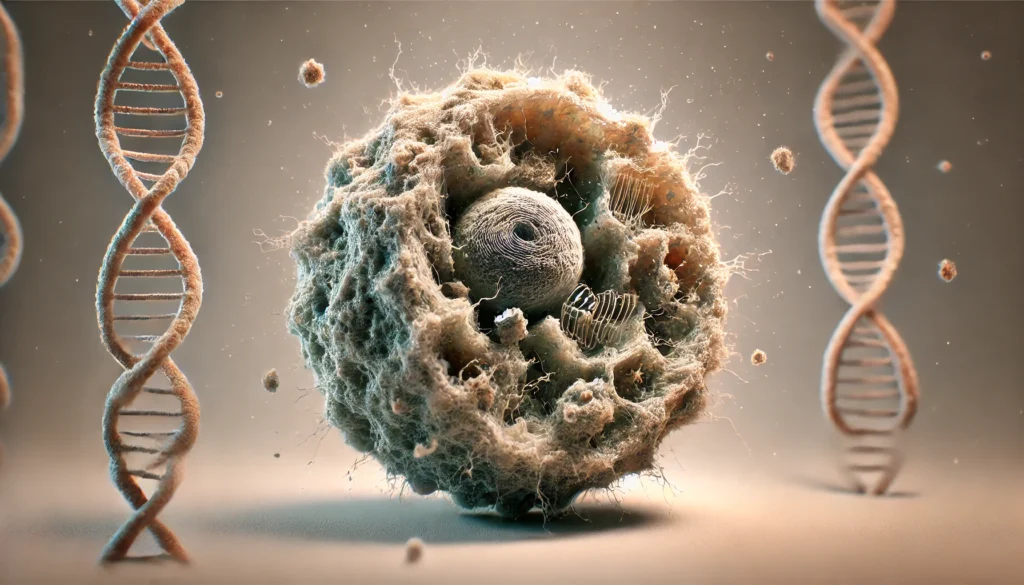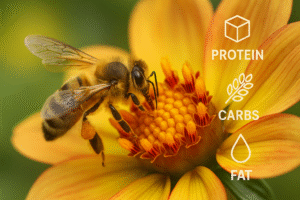Ageing is a universal process that we all experience, yet it remains one of the most mysterious and fascinating areas of science. From the wrinkles on our skin to the changes in our energy levels, ageing manifests in various ways. But what actually causes these changes at the cellular and molecular levels? In this blog, we’ll dive into “The Science of Aging: Cellular and Molecular Mechanisms” to explore how our bodies age and what science is uncovering about slowing or even reversing some of these processes.
What Is Aging?
Aging, at its core, is the gradual decline in the functionality of cells, tissues, and organs over time. While it’s a natural part of life, the science behind ageing is incredibly complex, involving a series of interconnected biological processes that affect our overall health and longevity. Ageing doesn’t just involve visible signs like greying hair or wrinkles—it impacts every organ system in the body, including the heart, brain, and immune system.
Cellular Aging: The Role of Cells
Cells are the basic building blocks of life, and their health is vital to how we age. But over time, cells undergo various changes that contribute to ageing:
Telomere Shortening:
Telomeres are protective caps at the ends of our chromosomes that prevent DNA damage. Every time a cell divides, these telomeres get a bit shorter. Eventually, they become too short to protect the DNA, leading to cell damage or death. This is one of the key mechanisms behind ageing. Imagine telomeres as the plastic tips on shoelaces—when they wear out, the shoelace frays, just as cells become less functional without telomeres.

Cellular Senescence:
As cells accumulate damage, they can enter a state called senescence, where they stop dividing but don’t die. Senescent cells release harmful chemicals that cause inflammation and damage surrounding cells, accelerating the aging process. While senescence is a protective mechanism to prevent the spread of damaged cells, the accumulation of these cells leads to tissue dysfunction.
Stem Cell Exhaustion:
Stem cells are the body’s repair system, responsible for regenerating damaged tissues. As we age, our stem cells lose their ability to repair tissues effectively, leading to slower healing and the decline of organ function. For example, stem cells in the skin become less effective, which is why wounds take longer to heal in older adults.
Molecular Aging: The DNA Perspective
On a molecular level, ageing is influenced by changes in our DNA and the molecules that regulate cellular function:
Epigenetic Changes:
Our DNA is wrapped around proteins called histones, and chemical tags known as epigenetic markers help control which genes are turned on or off. As we age, these epigenetic markers become altered, leading to the misregulation of genes. This can cause problems like reduced energy production, weaker immune response, and the development of age-related diseases.
Mitochondrial Dysfunction:
Mitochondria act as the cell’s powerhouses, generating the energy needed for its functions. Over time, mitochondrial function declines, leading to less efficient energy production. This is why older individuals often experience fatigue and a slower metabolism. Mitochondrial dysfunction is also linked to several age-related diseases, including Alzheimer’s and Parkinson’s.
Accumulation of Damage:
Throughout life, our cells are exposed to harmful substances like free radicals (unstable molecules) that cause oxidative damage to DNA, proteins, and lipids. Over time, the body’s ability to repair this damage decreases, resulting in cellular dysfunction and ageing. Antioxidants, found in many fruits and vegetables, help neutralize free radicals, but they can’t entirely stop the damage.
The Hallmarks of Aging: A Broader Framework
Researchers have identified nine key hallmarks of ageing, which include telomere shortening, mitochondrial dysfunction, and cellular senescence, among others. These hallmarks offer a framework for understanding the biological processes that drive ageing and provide insight into potential interventions. Each hallmark is interconnected, meaning addressing one could help alleviate others.
For example, improving mitochondrial function through exercise has been shown to boost overall cellular health, reducing the effects of ageing. Similarly, removing senescent cells in animal studies has led to increased lifespan and improved tissue function.
Case Study: Caloric Restriction and Aging
One of the most interesting findings in ageing research comes from studies on caloric restriction. Animals that consume fewer calories while maintaining adequate nutrition tend to live longer and exhibit fewer signs of ageing. This effect is believed to be due to reduced oxidative stress and improved mitochondrial function. While the precise mechanism remains unclear, caloric restriction has demonstrated the potential to delay the onset of age-related diseases.
However, scientists caution against drastic reductions in calorie intake for humans, emphasizing the need for more research to determine safe and effective methods of implementing caloric restriction as a potential anti-ageing strategy.
The Future of Aging Research: Interventions and Therapies
Given the complex cellular and molecular mechanisms that contribute to ageing, scientists are exploring various therapies to slow or reverse ageing:
Senolytics:
Senolytic drugs are designed to target and eliminate senescent cells from the body. In animal studies, senolytics have shown promise in improving physical function and extending lifespan. Early human trials are also underway, and researchers are hopeful about the potential of these therapies to reduce the burden of age-related diseases.
Gene Therapy:
Some researchers are exploring gene therapy as a way to extend lifespan by modifying genes related to ageing. For example, therapies that lengthen telomeres or boost mitochondrial function could potentially slow down the aging process. Though still in the experimental phase, gene therapy shows significant promise for the future of anti-ageing treatments.
Lifestyle Interventions:
Simple lifestyle choices, like regular exercise, a balanced diet rich in antioxidants, and stress management, have been shown to positively affect the ageing process at both the cellular and molecular levels. These interventions can improve mitochondrial function, reduce oxidative stress, and even influence epigenetic changes that occur with age.
Conclusion
The science of ageing is a rapidly evolving field, uncovering new insights into the cellular and molecular mechanisms that drive the ageing process. While ageing is a natural part of life, understanding these processes gives us the power to explore potential interventions that could extend both lifespan and health span. From telomere shortening to mitochondrial dysfunction, each mechanism contributes to the complex tapestry of ageing. As science advances, we may find ways to not just add years to our lives but life to our years. So, the next time you think about ageing, remember—science is working hard to help us all age a little more gracefully.
Author’s Note
Aging is a topic that affects us all, and the more we learn about it, the better we can approach it with knowledge and understanding. I hope this blog has given you some insight into the incredible complexity of ageing and the exciting research being done to address it.
G.C., Ecosociosphere contributor.
References and Further Reading
- National Institutes of Health (NIH) on Cellular Aging
- Scientific American on The Hallmarks of Aging
- Age Reversal: Reversing Time. https://reversal.ca/age-reversal-reversing-time-2/
- Unveiling the Hidden Impact: How Aging Adult Stem Cells can. https://www.utahfootdoc.com/blog/unveiling-the-hidden-impact-how-aging-adult-stem-cells-can-damage-tissues
- The Science of Aging: How Lifestyle Choices Impact Longevity. – Methuselah Longevity. https://methuselahlongevity.com/2021/07/the-science-of-aging-how-lifestyle-choices-impact-longevity/
- The Science of Aging: Unlocking the Secrets of Youthful Skin – Living Healthy. https://www.livinghealthyrx.com/anti-aging/the-science-of-aging-unlocking-the-secrets-of-youthful-skin.html




